The number of dental veneers needed for a dental makeover depends on many variables and differs according to the specific details of each case. One veneer is enough for some people to cover a minor flaw, while numerous veneers are necessary for those who want a more extensive makeover to achieve uniformity and symmetry. Focusing on the "smile zone," which usually comprises the teeth that are visible when smiling, and applying veneers to those teeth to create a unified appearance, is a frequent strategy. The patient's preferences and the dentist's advice are essential.
The front surfaces of teeth are covered with thin, custom-made shells called dental veneers, which improve their appearance by fixing problems such as stains, chipping, gaps, and misalignment. There are types of veneers and one of them is porcelain veneers. The quantity of veneers required is determined by some factors, such as the patient's smile goals, the level of cosmetic issues, and the alignment of their teeth.
The cost increases proportionally to the number of veneers required. The price of each veneer is added to the overall veneer cost, which includes the dentist's experience and laboratory fees. Most dental makeovers use six up to eight veneers to get a symmetrical and dramatic outcome, while it is difficult to know the exact average number of veneers. The most common questions from people are “How much do veneers cost?” or “Should I get veneers?” A dentist's advice is necessary for selecting the appropriate quantity depending on unique circumstances and desired results.
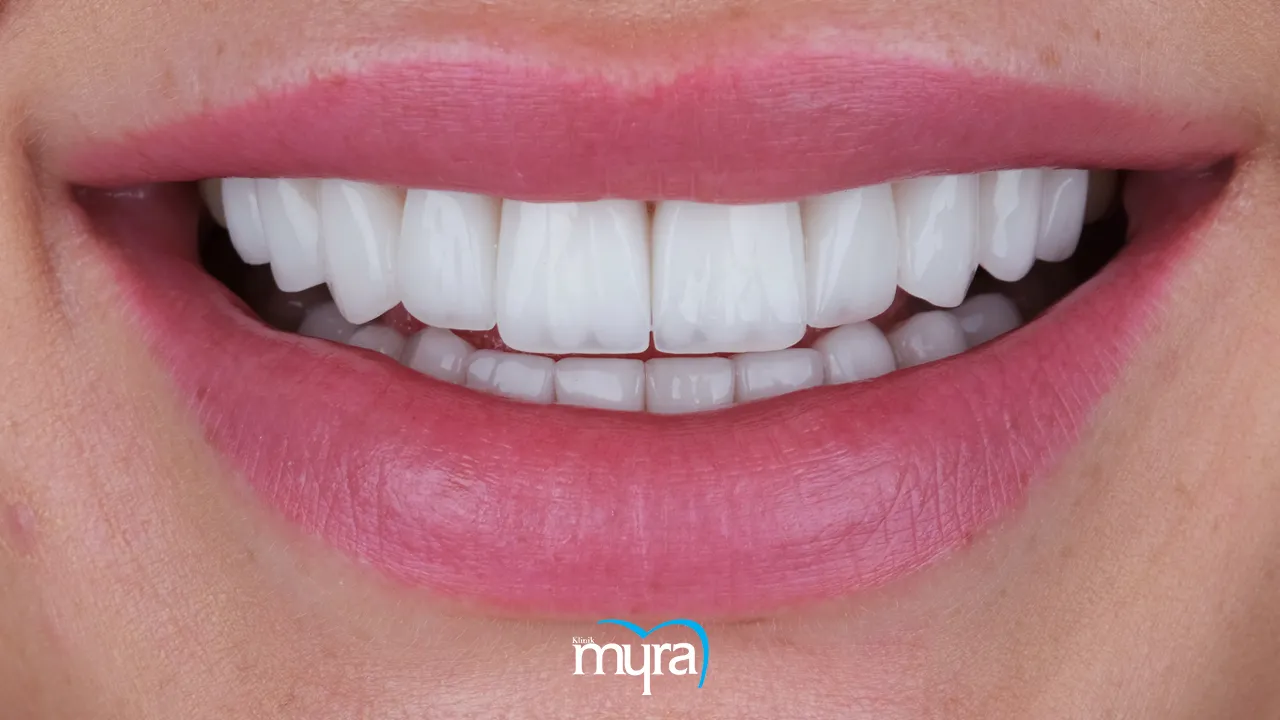
What is the usual quantity of dental veneers needed?
The usual quantity of dental veneers needed is six up to eight for most people. The normal number of dental veneers required varies depending on a person's unique circumstances, including their smile goals, oral health, and the severity of their cosmetic issues. Focusing on the "smile zone," which encompasses the teeth that are visible when smiling, laughing, or speaking, is typically a prevalent strategy. Many people who want a balanced and visually pleasing result frequently obtain veneers on six to eight teeth in the smiling zone. The range enables the correction of any obvious flaws while preserving their natural look.
A single tooth or a small number of teeth need one or two veneers in some situations, though. Greater cosmetic demands necessitate more veneers for a thorough makeover. Remember that the last decision about the quantity of veneers must be made after a full consultation with a dentist. Orthodontics or dentists evaluate the patient's particular circumstances, go through their expectations, and offer the most appropriate treatment plan for attaining the desired results.
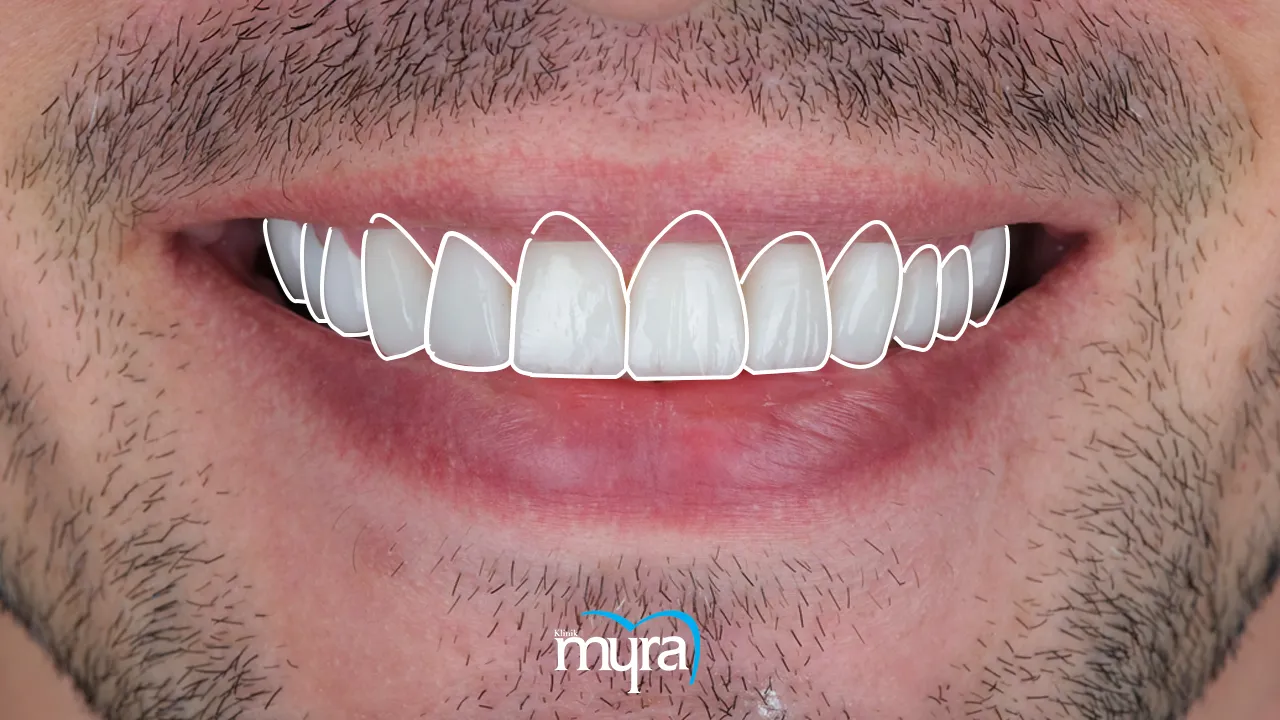
Are veneer costs related to the number needed?
Yes, veneer costs are related to the number of veneers needed by the patient. The price of a dental cosmetic increases as the number of veneers needed increases. Each veneer increases the total cost, which considers the price of the materials, the dental laboratory fees, and the skills of the dentist. Be mindful when estimating the cost of veneers and not the quantity of veneers alone. For example, the price is cheaper if the patient needs veneers on a few teeth to address particular cosmetic issues rather than more teeth for a whole smile makeover.
Most dentists provide discounts or packages when more veneers are being installed. Numerous elements affect the price of veneers, including the number required, the type of material utilised, the dentist's costs, the location, and any related procedures. Veneers are often not included in dental insurance. A thorough consultation with a dentist is advised to obtain an exact cost depending on the specific needs and desired results of the patient.
How to identify the quantity of dental veneers needed?
The factors needed to identify the quantity of dental veneers are listed below.
- Tooth Discoloration: The number of dental veneers required to modify a tooth's appearance depends on the degree of tooth discolouration. The number depends on how serious the discolouration is for an even blend, and severe cases necessitate more veneers. The visual appeal and oral symmetry of a patient's smile are restored when tooth discolouration is treated, which tackles dental health issues and cosmetic aspects.
- Oral health: Dental veneers are important as oral health impacts how many are required to alter a smile. it is necessary to address underlying oral health problems and dental problems, including decay, fractures, or misalignment. The quantity of veneers required improves the smile's cosmetic appeal while promoting long-term oral health. A beautiful smile and a healthy mouth are the results of a holistic approach to dental care, which mixes aesthetic enhancements with maintaining optimal dental function and health.
- Smile design: The amount of dental veneers required for a successful makeover is influenced by the strategic planning and customization of the patient's smile transformation or smile design. Determining the optimal amount of veneers for a symmetrical, balanced smile involves examining facial features, tooth proportions, the gum line, and overall smile aesthetics. The procedure maximises the cosmetic effects of veneer treatment, enhancing self-esteem and confidence.
- Tooth alignment: The arrangement and placement of teeth within the dental arch, known as tooth alignment, affects the number of dental veneers required to remodel one's smile. It influences the veneer treatment's final aesthetic result and helps to straighten the bite and improve dental health. A comprehensive approach to smile design includes addressing teeth alignment and veneer implantation to accomplish both aesthetic and functional goals.
- Aesthetic goals: Dental veneers' aesthetic goals are the intended visual effects a patient hopes to achieve, such as changing their teeth's colour, shape, size, or overall appearance. The objectives have a considerable impact on the number of veneers required for a successful smile makeover. Treatment strategies are guided by aesthetic objectives to help patients develop distinctive, balanced smiles that reflect their preferences and increase confidence. Dentists improve patients' smiles in ways that are in line with their patients' ideals by putting aesthetic aims first.
- Adjacent teeth: Adjacent teeth or teeth next to one another are being treated with veneers, which have a substantial impact on the number of dental veneers required for a flawless smile change. Veneers are shown to establish a harmonious blend of veneered and natural teeth if the adjacent ones have severe colour differences, shape irregularities, or cosmetic defects. The patient's aesthetic objectives and cosmetic dentistry principles are enhanced by the entire approach to smile design, producing attractive and well-balanced results.
- Treatment phases: Phases of treatment for dental veneers include initial consultations, exams, tooth preparation, fabrication, bonding, and follow-up sessions. Figuring out how many veneers are required to achieve the desired results. Dentists evaluate patients' dental health, cosmetic issues, and the attractiveness of their smiles. It helps in determining the best course of treatment. Phases of treatment guarantee a planned, thorough approach to changing the smile, correcting aesthetic issues, and producing a result that looks natural.
- Patient preferences: Determining the number of dental veneers required for a successful smile makeover depends heavily on patient preferences. The choices dictate selections about which teeth need to be fixed, from minor flaws to a complete makeover. Making a treatment plan that is unique to the patient, ensuring that the outcomes are in line with their goals, and improving their confidence depends on patients' preferences.
- Functional considerations: Dental veneers must take the patient's bite, jaw alignment, and oral function into account while designing them functionally. Some factors affect the number of veneers required for a successful procedure. It takes several veneers to correct problems, such as malocclusion or misalignment. Prioritising bite alignment and occlusion provide an enhanced look, dental health, and functionality. The approach highlights the significance of considering both aesthetic and functional factors.
- Tooth condition: The number of dental veneers required to alter a smile is largely influenced by the condition of the teeth. Aesthetics and dental health are impacted by the teeth that are chosen for veneer treatment. Dentists analyse the structural strength of teeth and address underlying abnormalities before placing veneers to ensure a strong foundation for veneers. The comprehensive method improves the aesthetics of the smile and contributes to the long-term success and endurance of the veneer treatment.
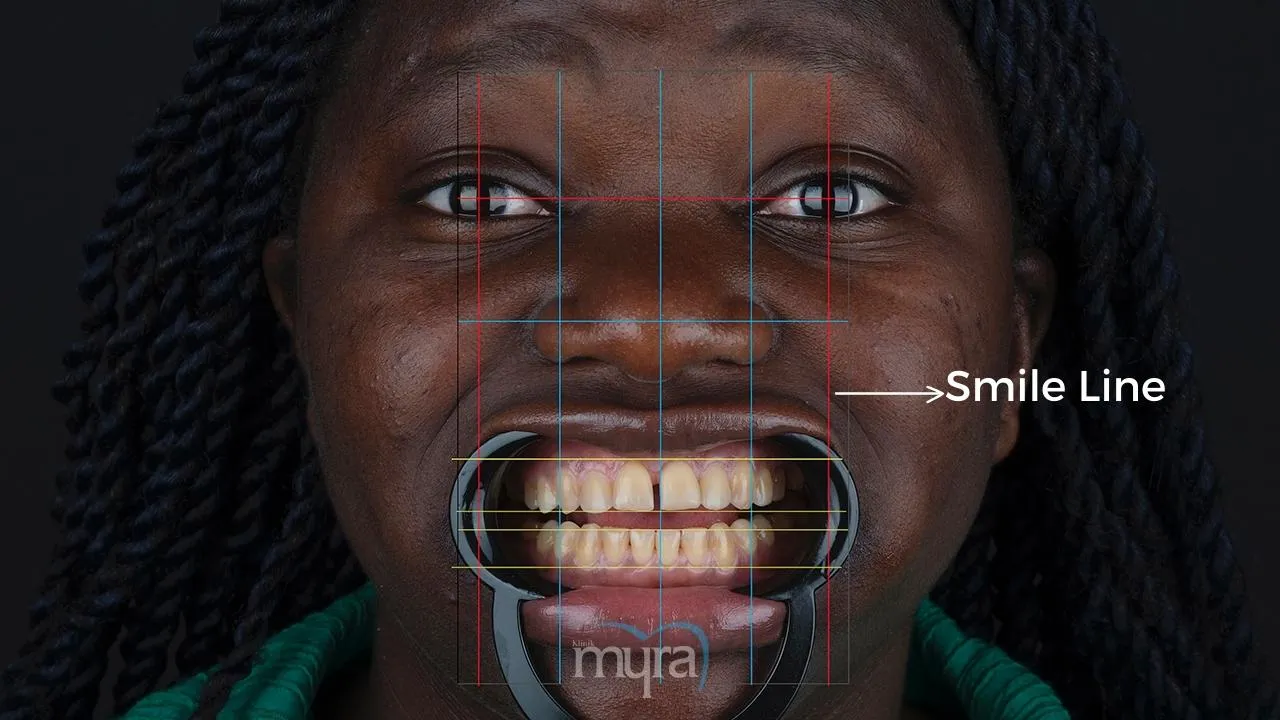
1. Tooth Discoloration
Tooth discolouration influences the number of dental veneers necessary for a complete smile change. The quantity of veneers required to provide a consistent and uniform appearance throughout the smile depends on how severely stained the teeth are. A greater number of veneers is required to achieve a smooth transition between the veneered teeth and the rest of the natural teeth in cases when there is extensive or severe discoloration and several teeth are impacted.
Tooth discolouration describes a change in a tooth's original colour, which often gives teeth a stained or discoloured look. Tooth discoloration is classified as Intrinsic and Extrinsic tooth stains. Intrinsic stains are the discolouration on the inner layer of the tooth or dentin, which is caused by oral injury or overexposure to fluoride. Intrinsic and Extrinsic stains are the discolouration that affects the outermost of the tooth or enamel. It is frequently caused by tobacco, coffee, or tea.
A natural-looking smile after veneer application depends on a balanced outcome. The importance of addressing both cosmetic issues and dental health considerations is highlighted by tooth discoloration's impact on the quantity of dental veneers. Dentists improve their patient's overall dental health and the visual appeal of their smile by calculating the right amount of veneers that are required. The assessment of tooth discolouration leads the treatment approach, demonstrating the critical role it plays in generating successful and satisfactory veneer treatments.
2. Oral Health
Tooth oral health refers to the general state of a patient's teeth, gums, and oral tissues. Oral health is essential in figuring out how many dental veneers are required for a successful smile makeover. The number of veneers needed to get the best outcomes directly depends on the state of oral wellness. Taking care of basic oral health issues becomes a priority when a patient has several teeth that are affected by dental problems including decay, fractures, or misalignment. Restoring the health and functionality of damaged teeth reduces the amount of veneers required.
Oral health ensures that the veneer procedure merely improves the cosmetic look of the smile but contributes to long-term oral health too. The significance of dental veneer amount being influenced by oral health highlights the holistic approach to dental procedures, where preserving optimal dental function and health is effortlessly linked with cosmetic enhancements. Patients benefit from both a beautiful smile and healthy gums by addressing oral health issues alongside cosmetic improvements.
3. Smile design
Smile design is the methodical planning and individualization of a patient's smile transformation while considering several esthetic and structural factors. The smile design has a major impact on how many dental veneers are necessary for an effective smile makeover. Careful evaluation of the patient's facial characteristics, tooth proportions, gum line, and overall smile aesthetics are part of the smile design process. Dentists calculate the appropriate amount of veneers required to produce a symmetrical and balanced smile. The quantity of dental veneers is impacted by smile design because it directs judgments about which teeth need to be treated to produce symmetry, alignment, and a natural appearance.
Some cases require additional veneers for more thorough changes, while others need fewer veneers for specific improvements, based on the individual's particular smiling features. The capacity of smile design to influence dental veneer quantity to maximise the treatment's cosmetic impact. It guarantees that the patient's smile is specifically matched to their facial features and preferences is what makes it so significant. Dentists produce spectacular modifications that not simply improve smiles but raise confidence and self-confidence by carefully studying the principles of smile design.
4. Tooth Alignment
Tooth alignment is the arrangement and placement of teeth within the dental arch. The tooth alignment helps in determining the number of dental veneers needed for a successful smile makeover. The quantity of dental veneers is impacted by tooth alignment because it determines which teeth require veneers to achieve a straight, even, and aesthetically pleasing smile. Veneers are purposefully positioned on particular teeth to give the appearance of a straighter smile in situations when there is a slight to major misalignment as known malocclusion. A larger number of veneers is required to provide a smooth and uniform appearance when there is substantial misalignment.
The importance of tooth alignment on the quantity of dental veneers is seen in its effect on the overall aesthetic result of the veneer procedure. Dentists assist patients in achieving a smile that is not solely more aesthetically pleasing but adds to greater oral health and bite alignment. The idea highlights the comprehensive approach to smile design, wherein veneer placement and teeth alignment collaborate to attain both aesthetic and practical objectives, resulting in a self-assured and balanced smile.
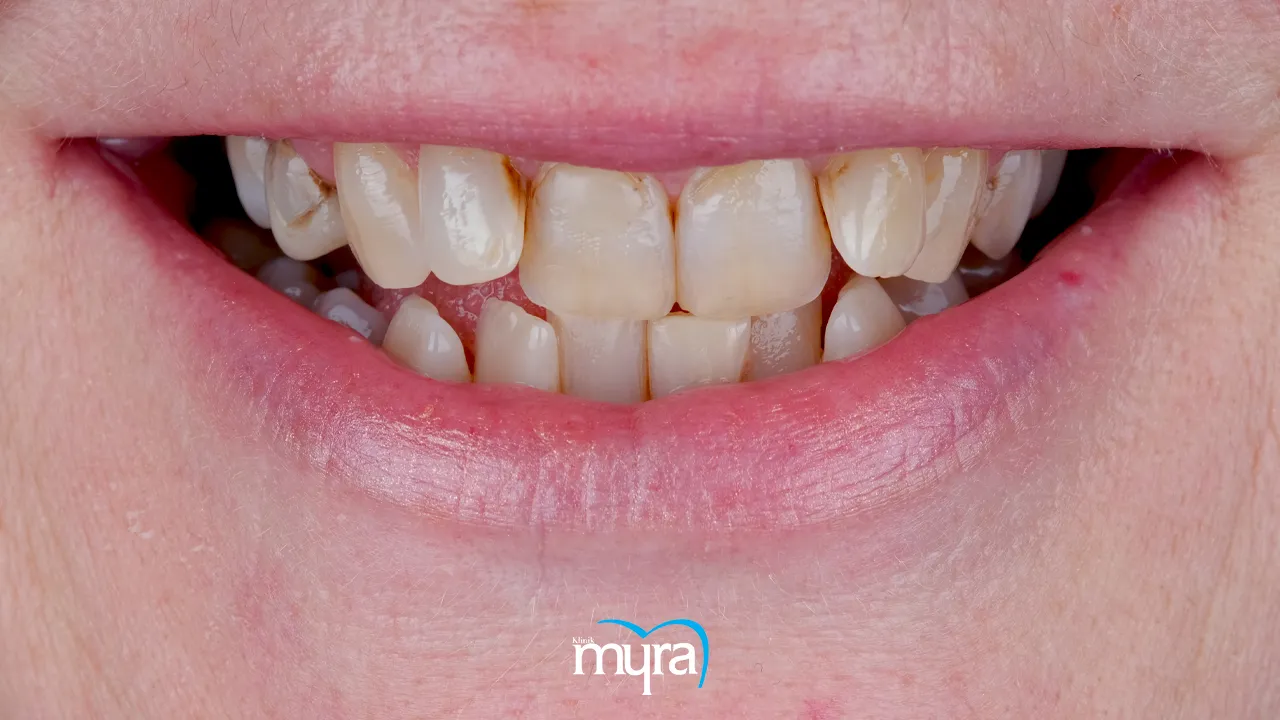
5. Aesthetic Goals
Aesthetic goals in the context of dental veneers refer to the intended visual outcomes that a patient hopes to accomplish through veneer treatment. The objectives cover a wide range of features of smile enhancement, including tooth colour, shape, size, and total appearance. The number of dental veneers required for a successful smile makeover is greatly influenced by the desired aesthetic results. The extent of a patient's aesthetic objectives directly affects the number of veneers needed to produce the desired outcome. For example, more veneers are required to provide a unified and consistent appearance if a patient wants a total smile makeover that addresses several cosmetic issues.
A few veneers are sufficient if a patient's goals are primarily focused on addressing specific flaws in a few teeth. Dental veneer quantity is affected by aesthetic goals because they manage the course of treatment toward meeting the patient's expectations while preserving a natural and balanced appearance. The quantity of veneers is adjusted to obtain the desired aesthetic results, ensuring that patients have smiles that reflect their tastes and increase their self-confidence. Dentists adjust patients' smiles to produce satisfying and alluring smiles by placing a value on aesthetic goals.
Dentists adjust patients' smiles to produce satisfying and alluring smiles by placing a value on aesthetic goals, which are carefully aligned with the principles of smile design to ensure natural and harmonious results.
6. Adjacent Teeth
Adjacent teeth are the teeth located next to the ones being treated with veneers. Determining the number of dental veneers required for a seamless smile makeover is influenced by the condition and alignment of the adjacent teeth. The number of dental veneers is impacted by them, which either need or do not need veneers to create a uniform and balanced appearance. It is wise to place veneers on adjacent teeth if there are substantial colour differences, uneven tooth shapes, or cosmetic flaws.
The method ensures a natural and consistent blend between the veneered teeth and their adjacent natural teeth. The significance of adjacent teeth on dental veneer quantity emphasises the comprehensive features of smile design. Dentists design changes that not solely improve the treated teeth but improve the total look of the patient's smile by considering the visual consistency of the patient's smile. The attention to detail helps to achieve sufficient and appropriate solutions that are consistent with both the patient's aesthetic goals and the principles of cosmetic dentistry.
7. Treatment Phases
The treatment phases refer to the many stages and steps that are included in the veneer placing procedure. The first consultations and examinations, the tooth preparation, veneer manufacture, bonding, and follow-up sessions, are included in the phases. The amount of dental veneers required to obtain the desired results is determined by the treatment phases, which offer an organised framework to accomplish. Dentists evaluate the patient's smile aesthetics, oral health, and particular cosmetic issues during the evaluation and planning phases. The assessment helps determine which teeth are specifically needed for veneers and establishes the best plan of action.
Treatment stages that have an impact on dental veneer amount are important because they help guarantee a planned and thorough approach to smile transformation. Dentists accurately estimate the quantity of veneer placement required by following a methodical series of phases, from resolving certain cosmetic concerns to attaining appealing and natural-looking teeth. The strategy highlights the value of careful preparation and exact execution throughout the treatment process, resulting in successful and satisfying outcomes for patients.
8. Patient Preferences
Patient preferences refer to the individual's objectives for their smile transformation. The number of dental veneers required for a successful result is influenced by individual tastes. Dental veneer quantity is influenced by patient preferences, which determine which teeth need to be treated to produce the desired cosmetic effect. Some patients place a higher priority on correcting specific flaws on a single tooth, while others look for a more thorough makeover that involves several teeth in the smile zone.
The amount of veneers needed changes depending on the degree of improvement each patient wants. Patient preferences play an essential part in developing a customised and satisfactory treatment plan, which is why they matter when determining the number of dental veneers. Dentists modify the number of veneers to fit the patient's vision for their smile by carefully evaluating the patient's wants and expectations. It reinforces the significance of cooperation between the dentist and patient throughout the veneer treatment procedure and guarantees that the final results match the patient's preferences and increase their trust.
9. Functional Considerations
Functional considerations pertain to the evaluation of how the veneers interact with the patient's bite, jaw alignment, and total oral function. The number of dental veneers required for a successful treatment outcome depends on these factors. Functional factors have an impact on the quantity of dental veneers by determining which teeth must be treated to guarantee appropriate occlusion, bite alignment, and pleasant chewing. A greater number of veneers become necessary to address functional difficulties and establish a balanced bite if a patient has problems, such as misalignment or malocclusion that affect their oral health.
Functional factors that influence dental veneer number are important because they help to improve both oral health and functionality. Dentists create veneer treatments that improve a patient's total oral health by addressing ideal bite alignment and occlusion. The method shows how important it is to consider both aesthetic and functional factors when figuring out the right quantity of veneers to use.
10. Tooth Condition
Tooth condition refers to the overall health, structural integrity, and aesthetic status of a patient's teeth. It helps in determining the number of dental veneers required to produce a successful smile alteration. Dental veneer quantity is impacted by tooth condition because it determines which teeth need veneer treatment to address particular issues. A greater number of veneers have to be required to produce an even and uniform appearance if a patient has several teeth with abnormalities including tooth decay, fractures, or significant cosmetic flaws.
The importance of tooth condition influencing dental veneer number resides in its impact on both aesthetics and oral health. Dentists make certain that the treated teeth serve as a stable foundation for the veneers by assessing the structural soundness of teeth and treating any underlying concerns before placing veneers. The strategy contributes to the long-term effectiveness and durability of the veneer treatment in addition to improving the smile's aesthetic appeal. Prioritising tooth health emphasises a holistic approach to smile enhancement. The aesthetic changes and oral health considerations play crucial roles in creating results that are not appealing but long-lasting and in favour of overall oral health.
What are Dental Veneers?
Dental veneers are thin porcelain mouldings that are custom-made, and glued to the front surface of a tooth. Veneers are a simple and efficient way to fix teeth that are discoloured, chipped, malformed, or crooked. Veneers are used to fill gaps between teeth when an orthodontic procedure has no option. Veneers are used as a cosmetic treatment. They shield the front of the tooth and are closely similar to the size, shape, and shade of the original teeth, giving patients a very natural-looking smile. An exact tint of porcelain is selected to fix a discoloured tooth or lighten the front teeth.
Getting dental veneers normally involves many stages. Every level has its own phase that must be examined carefully. A dentist must first thoroughly inspect the patient's teeth to determine whether veneers are an appropriate treatment. The front of the teeth is often cleaned by having a little portion of enamel removed to make room for the veneers. Impressions or digital scans of the teeth are obtained to construct exact, personalised veneers, which suit the patient's preference. Temporary veneers are put in, while the permanent ones are made.
The dental cement is utilised to gently attach the personalised veneers to the teeth after the completion. The veneers are permanently glued in the whole process and blend in with patients’ teeth. They are recognised for their adaptability to stains, sturdiness, and the capability to enhance the aesthetics of teeth. The enhancement of a person's smile gives them a more unified, appealing, and comfortable look.

What are the benefits of having Dental Veneers?
There are several benefits of having veneers, such as a boost in self-esteem, whiter and brighter teeth, stain resistance, realistic and natural appearance, and durability. Most people gain self-confidence and self-esteem after receiving dental veneers and seeing someone smile without being self-conscious about their teeth. Veneers greatly change a tooth's appearance by hiding several kinds of cosmetic flaws, such as stains, discolouration, chips, cracks, and misalignment. They offer a more appealing, brighter, and consistent smile.
Porcelain veneers are a fantastic option for people who wish to keep their smile looking bright over time and are very resistant to discoloration from food and beverages. High-quality veneers are produced particularly to precisely resemble the appearance of the patient's original teeth, creating a natural appearance, which blends with the adjacent teeth. Dental veneers are famous for longevity and stain resistance. They last for many years with proper maintenance and care, giving teeth a long-lasting improvement in appearance. There are other benefits of dental veneers that help patients and depend on how they are done and taken care of.
Are there risks in having Dental Veneers?
Yes, there are risks in having dental veneers. Potential risks are critical despite that veneers are common cosmetic dentistry procedures. Removing a thin layer of enamel from teeth to prepare them for veneers is an irreversible technique that for some people enhances their pain sensitivity. Veneers are not resistant to damage and occasionally chip or crack, particularly if they are exposed to severe stress or specific habits, including tooth grinding.
Maintenance is required to prevent stains, as veneers gradually discolour over time. Veneers have a lifespan and require replacing after a set period. Discuss with a professional and legitimate dentist to determine whether veneers are appropriate for unique dental concerns and to fully understand the potential threats. There are more risks of dental veneers that a patient encounters before and after the procedure, and they must not be neglected.
What should patients consider when discussing veneer quantity with their dentist?
Patients should consider some factors when discussing the number of veneers with their dentist. The scope of the dental problems dentists want to treat is of the highest priority. It usually consists of six to eight veneers on the upper front teeth, when the patient wants a more thorough smile makeover, addressing multiple teeth for issues, such as alignment, spacing, or shape, they choose a full set of veneers. A smaller quantity of veneers is needed when the goal is to correct cosmetic imperfections on just a few teeth, such as stains or minor chips. It is commonly known as "partial veneers."
Patients must consider the budget because the price of veneers varies depending on the number of teeth being treated. The dentist needs to evaluate the patient's overall oral health and the state of their natural teeth before deciding whether veneers are a good choice. Patients must communicate freely with their dentist about their expectations and objectives to ensure that the number and location of veneers correspond with their cosmetic goals and long-term oral health.
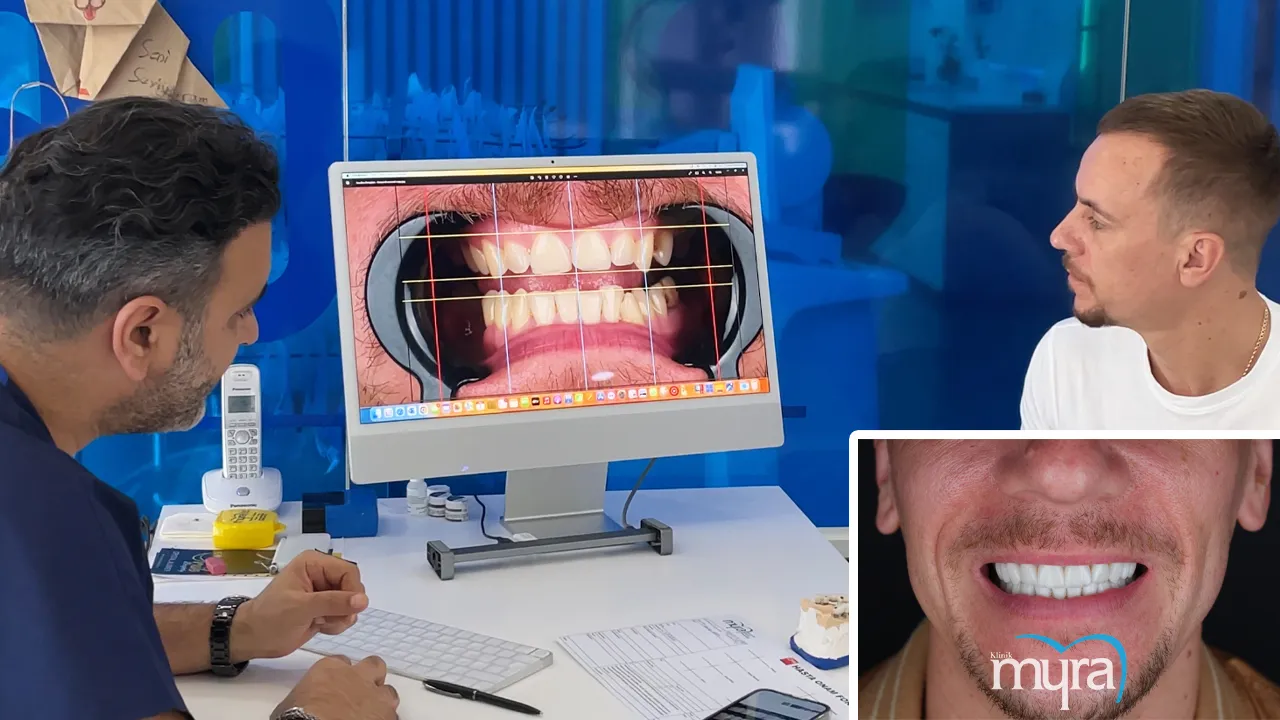
Are veneers expensive?
Yes, veneers are expensive. Dental veneer prices vary widely depending on some variables. Veneers are often thought of as a pricey cosmetic dental surgery. The cost varies depending on the type of material used, the dentist's level of expertise, the quantity of veneers needed, and the location of the dental office. Porcelain veneers are often more expensive than composite resin. The cost of veneers is often not covered by dental insurance because they are largely thought of as cosmetic operations.
Some dental practices provide financing solutions to patients to make veneers more affordable. Many people consider them to be a worthy investment to achieve a more appealing and confident smile while veneers are costly. Patients need to speak with their dentist about their finances and financing choices to make an educated choice based on their unique dental needs and aesthetic objectives when choosing veneers. There are more reasons why are veneers so expensive.
What is the difference between Dental Veneers and Dental Laminates?
The difference between dental veneers and dental laminates is their cost, process, and structure. A person's smile is repaired with either dental laminates or veneers. Traumatised teeth that undergo the procedures vary in size and shape. They adhere to the front of the tooth, hiding any imperfections and giving the tooth an overall healthy appearance. The dentist creates any desired colour shade for veneers and laminates as both are composed of porcelain. They are used by the dentist to whiten discoloured teeth. Laminates and veneers are used to straighten out crooked teeth.
A veneer is a very thin shell that resembles a fake fingernail. Dental cement is used to fix it to the front of the tooth. Laminates are thinner than veneers. The shells have an expanse that is comparable to a contact lens. Some patients enjoy the difference as laminates are less bulky. Patients must think about how much each treatment costs them. Keep in mind that dental insurance does not cover either of the two, particularly for cosmetic reasons. Dental laminates require a larger financial commitment than veneers. Budget-conscious people ought to consider such factors.
The dentist must modify the tooth as part of the veneer procedure. The dentist changes the tooth to provide a suitable fit for the veneer after numbing the patient. The tooth must next be made rough by the dentist etching away a portion of the enamel. It facilitates the bonding procedure. The natural tooth is more intact while using dental laminates. The dentist removes just enough enamel to place them on afflicted teeth.
Why Getting a Full Set of Veneers in Turkey Is a Smart Choice?
A full set of veneers in Turkey offers international patients a compelling mix of affordability and high-quality dental care. This increasingly popular option lets you achieve a complete smile makeover at a fraction of the cost you would pay in the UK or US. Turkey’s modern dental clinics are equipped with advanced technology and staffed by highly experienced cosmetic dentists, ensuring world-class treatment standards. Despite the lower price, patients enjoy minimally invasive procedures and efficient treatment timelines, often completing a full set of veneers in just a few visits. The end result is an enhanced smile that looks natural and boosts self-confidence – all while potentially enjoying a memorable visit to Turkey’s beautiful destinations as part of your dental travel experience.
However, before traveling for a getting full set of veneers in Turkey, it’s important to consider a few practical factors. Plan for travel and accommodation expenses (usually still far outweighed by the savings on treatment) and make sure to choose a reputable dental clinic with excellent patient reviews and credentials. Many top clinics cater to international patients with English-speaking staff and personalized support, which helps overcome any language barriers during consultation and aftercare. It’s also wise to understand the veneer aftercare process and have a plan for any follow-up needs once you return home. With careful research and preparation, you can confidently enjoy the benefits of affordable, high-quality veneers in Turkey while minimizing potential challenges, making it a rewarding path to achieve the smile you’ve always wanted.





